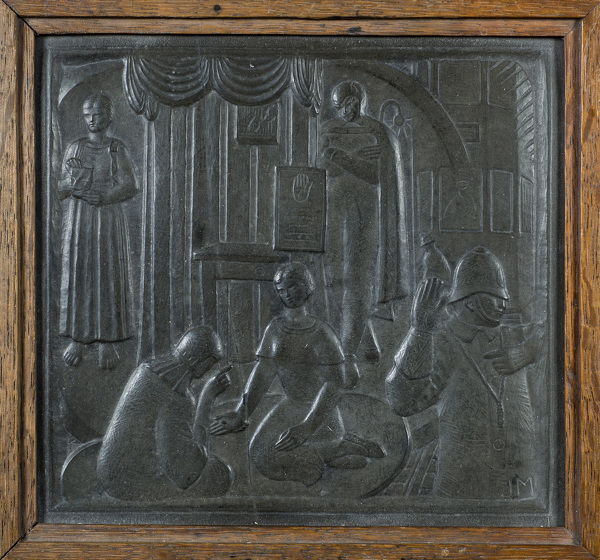Provenance: The artist's personal collection until 1972; the artist's housekeeper; thereafter by descent
The remarkable work of John McKenzie has only recently come to light.
Despite exhibiting his slates at the Royal Scottish Academy Summer
Exhibition, the Royal Glasgow Institute of Fine Arts, and The Arbroath
Art Society, (and in two solo exhibitions at the Arbroath Public Library),
McKenzie sold no more than a handful of sculptures during his lifetime.
Initially McKenzie worked in wood, but disappointed with the
results, he turned to roof slates and other materials found to hand.
Mckenzie accentuated the depth of his shallow designs by polishing them
with linseed oil mixed with slate dust. The works have retained their
original presentation _ the wall plaques with a narrow oak moulding and
the free standing reliefs set onto angled stands with bronze coloured resin
set around the asymmetrical edges. He produced no more than three to
four reliefs a year, which amounted to less than one hundred and fifty
over his entire career. By day a charge-hand mess-man on HMS Condor
(and later a railwayman), the reclusive McKenzie indulged his passion for
carving by night and at the weekends.
Inspired by Antiquity and his own system of recurrent motifs, he found it
entirely natural to add into his compostions figures in contemporary dress.
A rich symbolism imbues his work, complemented by lyrical titles such as
‘Lightsome Interlude’, ‘Fruitful Tree’ or ‘Moon Shot’.
When McKenzie died, in 1972, his estate was left to his housekeeper. A
type written inventory lists 112 works of art. The twenty-seven works selected
for this catalogue include some of McKenzie’s finest designs.

